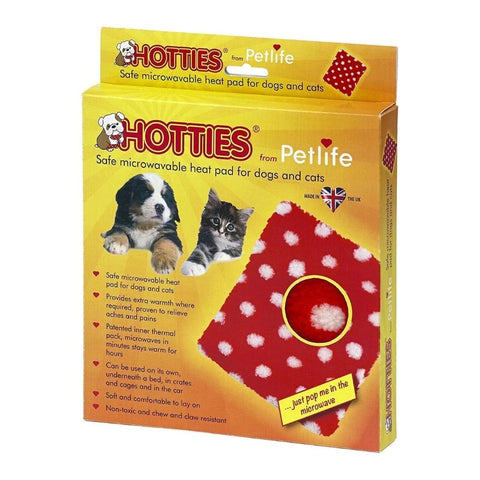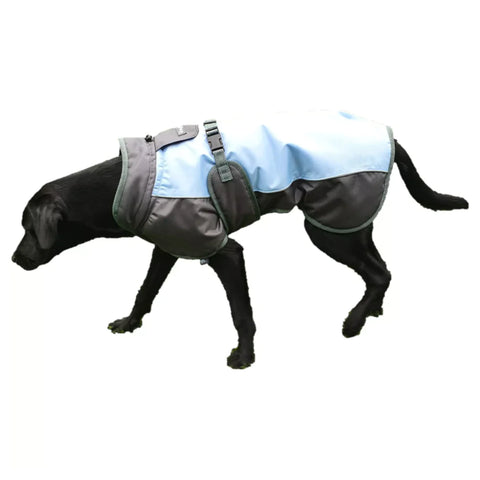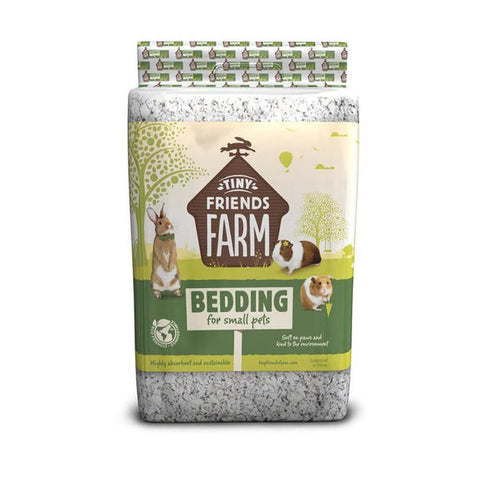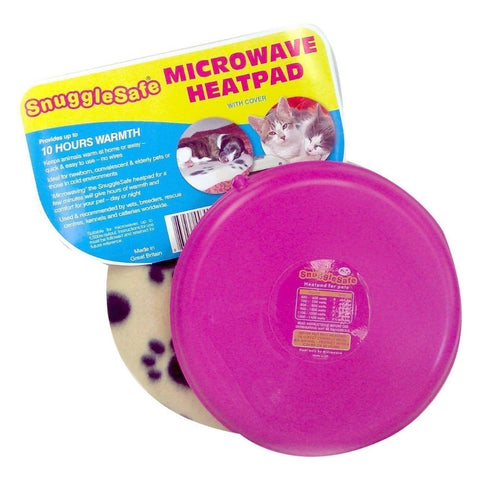The Essential Guide: Keeping Pets Warm and Safe During Winter
As the chill of winter sets in, it is essential to consider our furry companions' well-being in the midst of dropping temperatures. Just as we bundle up to stay warm, our pets require special attention and care during the cold season. Ensuring they stay cosy and protected from the harsh elements isn’t just an act of love; it's a crucial aspect of responsible pet ownership.
Understanding the Risks
The cold weather can pose various risks to our pets, especially those that spend time outdoors or live in cooler climates. Here are some reasons why keeping pets warm in winter is paramount:
- Hypothermia and Frostbite: Pets, like humans, are susceptible to hypothermia and frostbite. Prolonged exposure to freezing temperatures can lead to these life-threatening conditions, particularly in extremities like ears, paws, and tails.
- Joint Pain and Arthritis: Cold weather exacerbates joint pain, especially in older pets or those with arthritis. Keeping them warm helps ease their discomfort and improves their mobility.
- Respiratory Issues: Exposure to cold air can trigger respiratory issues, leading to coughs, sneezing, or even more severe conditions in pets with underlying health concerns.
Tips for Keeping Pets Warm
1. Indoor Comfort:
- Create a Warm Space: Ensure your pet has a cosy area indoors, away from drafts and cold floors. Provide them with soft bedding and blankets to snuggle into.
- Maintain a Warm Environment: Keep your home comfortably warm for your pet, especially when you're away. Consider using pet-safe heating pads or blankets to offer extra warmth.
- Proximity to Family Spaces: Pets often seek warmth and company. Placing their warm space near areas where the family spends time can provide additional comfort.
Petlife Microwavable Hottie Warm Heat Pad £19.89 and Scruffs Luxury Kensington Blanket £26.59
2. Outdoor Precautions:
- Limit Outdoor Time: Minimise outdoor activities during extreme cold weather. If your pet must go outside, keep the outings short.
- Appropriate Attire: Consider using pet clothing, such as coats or sweaters, for shorter-haired breeds or smaller animals to provide additional insulation.
- Protect Paws: Use pet-safe booties to shield their paws from snow, ice, and salt, which can be harmful.
Henry Wag Waterproof Dog Coat £23.59
Why Protecting your Pets Paws is Important
Snow and ice can pose various risks to a pet's paws, causing potential harm due to several factors:
Cold Temperatures:
Snow, especially when it's icy or packed, can be extremely cold. Just like humans, pets are susceptible to frostbite and hypothermia. The paws, being in direct contact with the snow, can quickly lose heat, leading to discomfort and potential frostbite if exposure is prolonged.
Ice and Crust:
Snow can hide layers of ice or form a crust on its surface, which can be sharp or abrasive. When pets walk on these surfaces, the snow can cause cuts, scratches, or abrasions on their paw pads. This can be painful and may lead to infections.
Chemicals and De-icers:
Chemicals used to melt snow and ice on roads and sidewalks, such as salt and ice melt products, can be harmful to pets. These substances can irritate and burn their paw pads. Moreover, if pets lick their paws to clean them, they might ingest these chemicals, leading to gastrointestinal issues.
Snow Clumps and Build-up:
Snow can accumulate between the toes and paw pads, forming clumps that cause discomfort and may even lead to difficulty in walking. Additionally, the accumulation of snow and ice on the paws can cause further exposure to the cold and moisture, increasing the risk of frostbite and irritation.
Moisture:
Snow can melt on contact with body heat, leading to wetness and moisture on the paws. Prolonged exposure to wet and cold conditions can soften the skin, making it more susceptible to irritation, cracking, and potential infections.
How To Protect Your Pet's Paws:
To safeguard your pet's paws from the potential harm caused by snow:
- Use pet-safe booties: These can protect their paws from the cold, ice, chemicals, and sharp surfaces.
- Wipe their paws after outdoor walks: Clean their paws with a damp cloth to remove any snow, ice, or chemicals. Dry their paws thoroughly to prevent irritation from moisture.
- Trim excess hair: Long hair between paw pads can collect snow and ice, so trimming it can help prevent build-up.
- Moisturize paw pads: Consider using pet-friendly paw balms or moisturizers to protect their pads from drying out and cracking due to exposure to snow and cold weather.
- Avoid heavily salted areas: Try to steer clear of areas where salt and de-icers are heavily used to reduce the risk of paw pad irritation or ingestion of harmful chemicals.
Dorwest Paw & Nose Balm £12.59
By being proactive and taking measures to protect your pet's paws from the potential hazards of snow, you can ensure they stay comfortable and safe during winter outings.
3. Health and Nutrition:
- Balanced Diet: Ensure your pet receives adequate nutrition to maintain a healthy coat, which acts as a natural insulator against the cold.
- Regular Exercise: Keep your pet active indoors to maintain their fitness, as this can also help them stay warm.
Why A Balanced Diet Is Important for Keeping Pets Warm
Maintaining a balanced diet for your pet plays a crucial role in keeping them warm during the winter months. Here's how:
Healthy Coat:
A balanced diet rich in essential nutrients, including proteins, vitamins, and fatty acids like Omega-3 and Omega-6, contributes to a healthy coat. A well-groomed and healthy coat acts as a natural insulator, providing warmth by trapping body heat close to the skin. A properly nourished coat helps regulate body temperature, keeping your pet comfortably warm even in cold weather.

YuMOVE Yum Super Salmon Oil £21.29
Energy Production:
Adequate nutrition ensures that your pet has the energy to regulate their body temperature. During winter, pets might use more energy to stay warm, especially when they're exposed to colder temperatures. A balanced diet provides the necessary calories and nutrients, helping pets maintain their metabolic rate, which aids in generating body heat.
Improved Immunity:
A well-balanced diet boosts your pet's immune system. Cold weather can make pets more susceptible to illnesses, which can impact their ability to regulate body temperature effectively. Proper nutrition strengthens their immunity, reducing the risk of illnesses that could compromise their overall health and ability to stay warm.
Maintaining Ideal Body Condition:
Maintaining an optimal body condition through a balanced diet ensures that your pet doesn’t lose too much weight during winter. Lean body mass, supported by a healthy diet, helps pets conserve energy and generate heat. Additionally, excessive weight loss can weaken pets and make them more vulnerable to the cold.
Hydration:
Providing adequate water intake is also crucial. Water keeps your pet hydrated, aids digestion, and helps regulate body temperature. During winter, indoor heating can dry out the air, leading to increased water loss through respiration. Ensuring your pet has access to fresh water helps maintain their overall health and warmth.
In essence, a balanced diet contributes significantly to your pet's overall health and helps them better cope with the challenges of colder weather. It supports their body's ability to generate heat, maintain a healthy coat, and sustain energy levels necessary for staying warm and comfortable during the winter season.
4. General Care:
-
Grooming: Regular grooming helps maintain a healthy coat that effectively regulates body temperature.
-
Check for Signs of Cold Stress: Look for signs of shivering, lethargy, or discomfort, and seek veterinary care if needed.
Preventing Cold Stress
Cold stress in pets refers to the physiological response and potential health issues that arise when animals are exposed to cold temperatures for extended periods without adequate protection or shelter. It occurs when a pet's body is unable to maintain its normal temperature, leading to discomfort, health problems, and in severe cases, life-threatening conditions.
Symptoms of Cold Stress in Pets:
- Shivering: Pets may shiver to generate body heat when they're too cold.
- Lethargy: They might become unusually inactive or lethargic in an attempt to conserve energy.
- Weakness or Sluggishness: A pet's movement might slow down or become uncoordinated due to the cold affecting their muscles.
- Pale or Discoloured Skin: Skin may turn pale, bluish, or discoloured due to poor circulation caused by the cold.
- Difficulty Breathing: Extreme cold can cause difficulty in breathing, especially for pets with respiratory issues.
- Frostbite: Exposed areas such as ears, paws, and tails are susceptible to frostbite, leading to tissue damage.
- Hypothermia: This is a severe condition where the body temperature drops dangerously low, leading to organ failure, coma, and even death if left untreated.
Factors Influencing Cold Stress:
- Temperature: Extreme cold temperatures, wind chill, and dampness can all contribute to cold stress.
- Duration of Exposure: Prolonged exposure to cold conditions without adequate shelter or protection increases the risk of cold stress.
- Breed and Health Conditions: Some pets are more susceptible to cold stress due to their breed, age, size, or existing health issues.
Preventing Cold Stress in Pets:
- Provide Shelter: Ensure pets have access to a warm and dry shelter away from drafts and cold surfaces.
- Appropriate Clothing: Use pet-specific clothing like sweaters or coats, especially for short-haired breeds or smaller animals.
- Limit Outdoor Time: Minimise outdoor activities during extremely cold weather, and if your pet must go outside, keep outings short.
- Dry and Clean: After outdoor activities, dry your pet thoroughly to prevent chilling and remove any snow, ice, or chemicals from their fur and paws.
- Regular Check-ups: Schedule veterinary check-ups to monitor your pet's health, especially during winter.
Understanding the signs of cold stress and taking proactive measures to protect pets from extreme cold is crucial for their well-being during the winter months. Providing adequate shelter, appropriate clothing, and minimising exposure to harsh weather conditions can significantly reduce the risk of cold-related health issues in pets.
Keeping Small Animals Warm
Keeping small animals warm, especially during colder weather, is crucial for their well-being. Here are some tips on how to ensure their comfort and safety:
1. Suitable Housing:
-
Insulated Enclosure: Ensure their cage or enclosure is well-insulated and draft-free. Use materials that provide insulation, such as wood, to help retain heat.
-
Bedding: Use appropriate bedding materials like hay, straw, or shredded paper to provide warmth and insulation. Ensure it's clean, dry, and regularly changed to prevent dampness.
Supreme Tiny Friends Farm Bedding £13.29
2. Heating Options:
-
Heat Pads or Heat Lamps: Consider using pet-safe heating pads or heat lamps designed for small animals. Position them carefully to avoid direct contact and burns, providing a warm spot within the enclosure.
-
Microwaveable Heating Pads: Small microwaveable pads can provide short-term warmth. Ensure they don't become too hot and check frequently to prevent burns.
Snugglesafe Pet Comfort Heat Pad & Cover £20.69
3. Proper Diet and Hydration:
-
Adequate Nutrition: Ensure small animals have a well-balanced diet to maintain their energy levels and body warmth. Consult a vet for specific dietary needs during colder months.
-
Hydration: Always provide access to fresh, unfrozen water. Cold weather can lead to dehydration, so regularly check and replenish their water supply.
4. Minimise Exposure to Cold:
-
Limit Outdoor Time: If these small animals usually have outdoor time, consider reducing their exposure during colder weather. Provide sufficient time indoors where it's warmer.
-
Protective Coverings: For animals like rabbits or guinea pigs that live outdoors, use covers or tarps to shield their enclosures from wind and moisture.
5. Monitoring Health:
-
Observation: Keep a close eye on your small pets for signs of cold stress or illness. Symptoms might include shivering, lethargy, or reduced activity.
-
Regular Vet Check-ups: Schedule regular check-ups with a vet to monitor their health, especially during colder months when they might be more susceptible to health issues.
6. Additional Considerations:
-
Companionship: Some small animals benefit from having a companion to huddle with for warmth. Ensure compatibility if introducing new animals.
-
Indoor Environment: If possible, bring smaller animals indoors during severe cold spells to ensure their safety and warmth.
Ensuring small animals have a warm and comfortable environment is essential for their health and well-being during colder periods. Regular monitoring, appropriate shelter, bedding, and supplemental heating can help keep them safe and content in chilly weather conditions.
Keeping Your Pet Warm with Direct4Pet
Keeping pets warm in winter is not just about comfort; it's about safeguarding their health and well-being. By taking proactive measures and being attentive to their needs, we can ensure our beloved companions stay safe and happy throughout the cold season. Remember, a little extra care goes a long way in ensuring our pets thrive despite the winter chill. Check out our full product range on our website to help with this.






